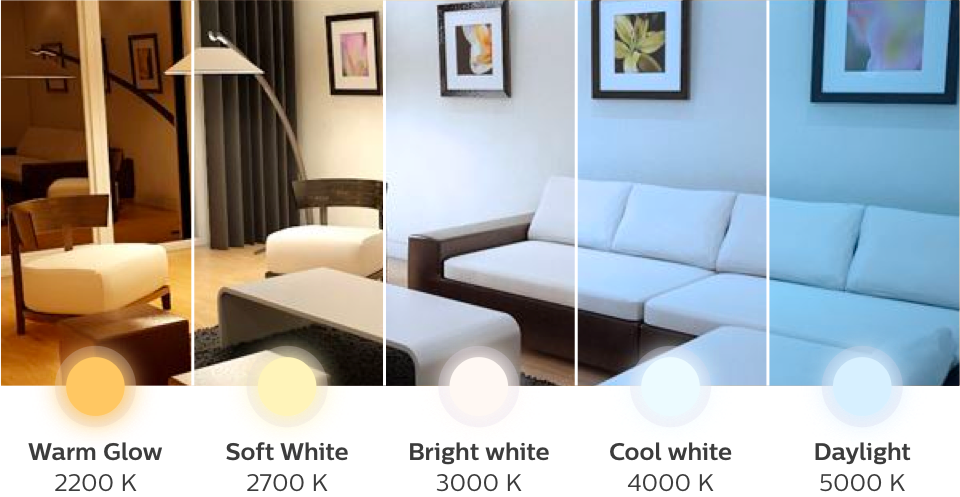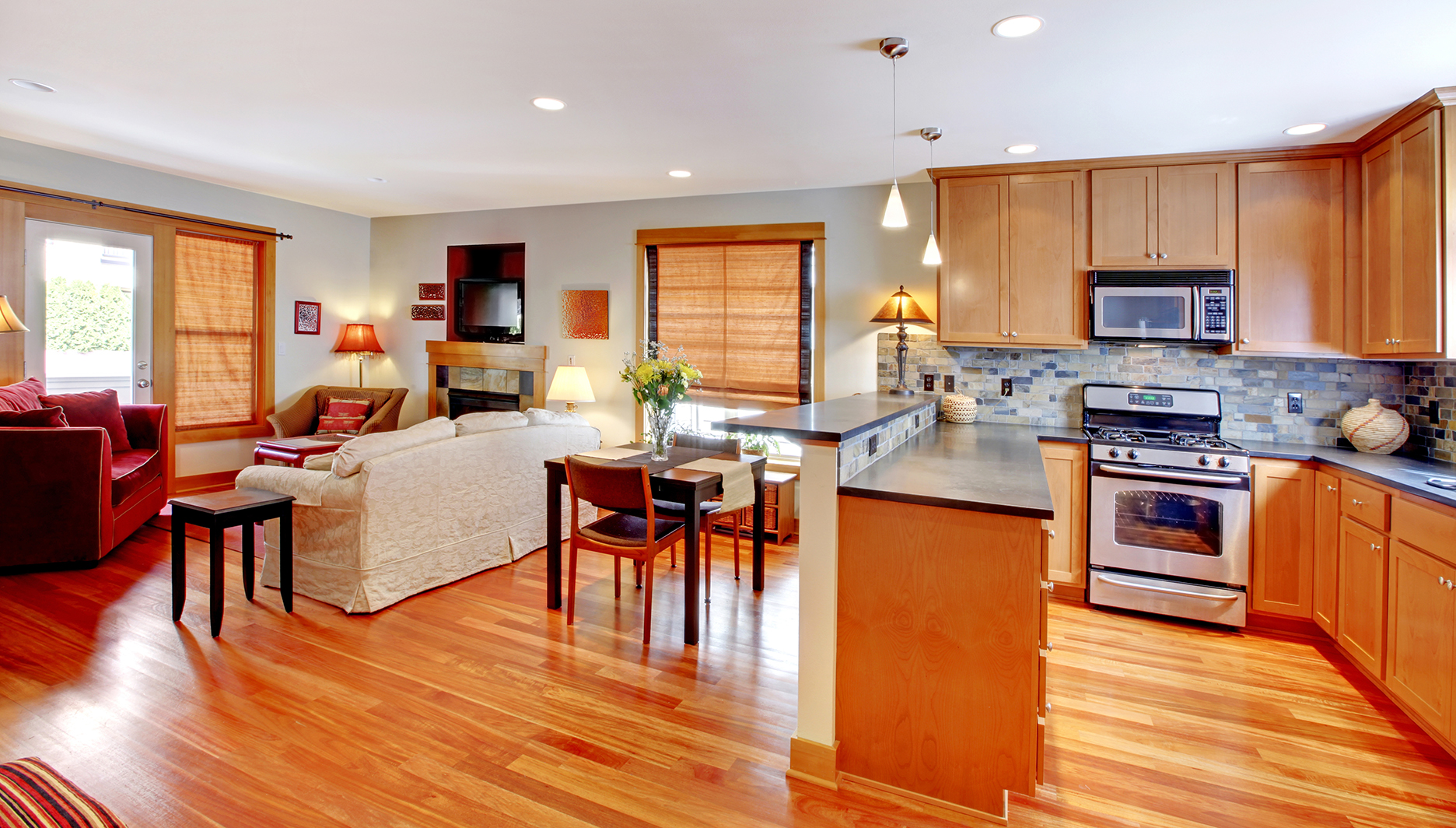When it comes to designing your kitchen, lighting is an essential element that can make or break the overall look and feel of the space. And one crucial factor to consider when choosing the right lighting is the light temperature. The temperature of light can greatly impact the ambiance and functionality of your kitchen, so it's essential to select the best option for your needs. The light temperature of a bulb is measured in Kelvin (K) and can range from warm to cool. Warm light has a yellowish hue, while cool light has a bluish tone. Both have their advantages, but which one is best for your kitchen? Let's find out.1. "Choosing the Right Light Temperature for Your Kitchen"
With so many options available in the market, it can be overwhelming to choose the right light bulbs for your kitchen. But fear not, we have created a comprehensive guide to help you make an informed decision. Let's take a closer look at the different light temperature options and their benefits for your kitchen.2. "Best Light Bulbs for Kitchen: A Comprehensive Guide"
Lighting is an essential aspect of any design, and the kitchen is no exception. The light temperature you choose can affect the overall look and feel of your kitchen. For example, warm light can make the space feel cozy and inviting, while cool light can create a modern and crisp atmosphere. It's crucial to consider the design aesthetic you want for your kitchen before selecting the light temperature.3. "The Importance of Light Temperature in Kitchen Design"
So how do you determine the ideal light temperature for your kitchen? One way is to consider the color scheme of your kitchen. Warm light complements warm tones like red, orange, and yellow, while cool light works well with cool tones such as blue, green, and purple. You can also consider the natural light in your kitchen. If your kitchen gets a lot of natural light, you can opt for cooler light to balance it out.4. "How to Determine the Ideal Light Temperature for Your Kitchen"
To help you narrow down your options, here are the top five light temperature options for a well-lit kitchen: 1. Soft White (2700K-3000K): This light temperature is warm and inviting, making it perfect for creating a cozy atmosphere in your kitchen. 2. Bright White (3500K-4100K): This light temperature is cooler than soft white and can give your kitchen a modern and clean look. 3. Daylight (5000K-6500K): This light temperature mimics natural daylight and can make your kitchen feel bright and energizing. 4. Cool White (6000K-6200K): This light temperature is on the cooler side and is often used in commercial kitchens for its bright and crisp look. 5. Natural Light (7000K-7500K): This light temperature is the closest to natural daylight and can make your kitchen feel fresh and bright.5. "Top 5 Light Temperature Options for a Well-Lit Kitchen"
The light temperature you choose for your kitchen can significantly impact the ambiance of the space. Warm light can create a cozy and intimate atmosphere, making it perfect for entertaining guests or spending time with family. On the other hand, cool light can give your kitchen a more modern and sleek feel, making it ideal for a minimalistic and contemporary design.6. "Creating the Perfect Ambiance: Best Light Temperature for Kitchen Spaces"
When it comes to light temperature, the type of bulb you choose also matters. LED and incandescent bulbs have different light temperature options, and each has its own advantages. LED bulbs are energy-efficient and have a longer lifespan, making them a popular choice for kitchens. They also come in a variety of light temperature options, making it easier to find the perfect fit for your kitchen. On the other hand, incandescent bulbs have a warm and natural light, but they are not as energy-efficient as LED bulbs.7. "LED vs. Incandescent: Which Light Temperature is Best for Your Kitchen?"
Did you know that the light temperature in your kitchen can affect your mood and behavior? Research has shown that warm light can make people feel more relaxed and calm, while cool light can make them feel more alert and focused. When designing your kitchen, it's essential to consider the activities that will take place in the space and choose the appropriate light temperature to enhance the experience.8. "The Science Behind Light Temperature and Its Impact on Kitchen Lighting"
Kitchen task lighting is crucial for performing tasks such as cooking, chopping, and reading recipes. The light temperature for task lighting should be bright and focused, making it easier to see and work with precision. Bright white or daylight bulbs are the best options for task lighting in the kitchen.9. "Best Light Temperature for Kitchen Task Lighting: Tips and Tricks"
When it comes to lighting your kitchen, it's all about finding the perfect balance. You can mix and match different light temperatures to create a layered and dynamic lighting scheme in your kitchen. For example, you can use warm light in the dining area for a cozy ambiance, while cool light in the cooking area for a more functional and modern feel. In conclusion, the best light temperature for your kitchen will depend on your personal preference, design aesthetic, and the activities that will take place in the space. Take the time to consider these factors and experiment with different options to find the perfect fit for your kitchen. With the right light temperature, you can create a beautiful and functional space that you will love spending time in.10. "Finding the Sweet Spot: Balancing Light Temperature in Your Kitchen"
The Importance of Choosing the Best Light Temperature for Your Kitchen

Creating a Warm and Welcoming Atmosphere
 When it comes to designing and decorating your home, one of the most important aspects to consider is lighting. Not only does it serve a functional purpose, but it also plays a crucial role in setting the mood and atmosphere of a room. And when it comes to the kitchen, a space that is not only used for cooking but also for gathering and entertaining, choosing the right light temperature is essential.
The main keyword of this article, "best light temperature for kitchen," is a key factor in creating a warm and welcoming atmosphere in your kitchen.
This is because the light temperature, also known as color temperature, refers to the appearance of light in terms of warmth or coolness. It is measured in Kelvin (K) and can range from warm, yellowish tones to cool, bluish tones.
When it comes to designing and decorating your home, one of the most important aspects to consider is lighting. Not only does it serve a functional purpose, but it also plays a crucial role in setting the mood and atmosphere of a room. And when it comes to the kitchen, a space that is not only used for cooking but also for gathering and entertaining, choosing the right light temperature is essential.
The main keyword of this article, "best light temperature for kitchen," is a key factor in creating a warm and welcoming atmosphere in your kitchen.
This is because the light temperature, also known as color temperature, refers to the appearance of light in terms of warmth or coolness. It is measured in Kelvin (K) and can range from warm, yellowish tones to cool, bluish tones.
Functionality and Practicality
 The kitchen is a multifunctional space that requires different levels of lighting depending on the task at hand. For example, while cooking, you may need bright, cool-toned light to see clearly and avoid any accidents. However, during a dinner party, you may want a softer, warmer light to create a cozy and intimate atmosphere.
Choosing the best light temperature for your kitchen means finding a balance between functionality and practicality.
This includes considering the layout of your kitchen, the type of lighting fixtures you have, and the activities that take place in the space.
The kitchen is a multifunctional space that requires different levels of lighting depending on the task at hand. For example, while cooking, you may need bright, cool-toned light to see clearly and avoid any accidents. However, during a dinner party, you may want a softer, warmer light to create a cozy and intimate atmosphere.
Choosing the best light temperature for your kitchen means finding a balance between functionality and practicality.
This includes considering the layout of your kitchen, the type of lighting fixtures you have, and the activities that take place in the space.
Enhancing the Design
 Lighting is a crucial element in interior design, and it can make or break the overall look and feel of a room.
The right light temperature can enhance the design of your kitchen, making it feel more inviting, spacious, and aesthetically pleasing.
For example, if you have a modern kitchen with sleek, minimalistic design elements, choosing cooler light temperatures can complement the clean lines and add a touch of sophistication. On the other hand, if you have a more traditional and cozy kitchen, warmer light temperatures can enhance the warmth and comfort of the space.
Lighting is a crucial element in interior design, and it can make or break the overall look and feel of a room.
The right light temperature can enhance the design of your kitchen, making it feel more inviting, spacious, and aesthetically pleasing.
For example, if you have a modern kitchen with sleek, minimalistic design elements, choosing cooler light temperatures can complement the clean lines and add a touch of sophistication. On the other hand, if you have a more traditional and cozy kitchen, warmer light temperatures can enhance the warmth and comfort of the space.
Final Thoughts
 In conclusion, when it comes to creating the perfect kitchen, choosing the best light temperature is crucial. It not only affects the functionality and practicality of the space but also plays a significant role in setting the mood and enhancing the design.
So, take the time to consider the different light temperature options and find the perfect balance for your kitchen.
With the right lighting, you can transform your kitchen into a warm and welcoming space that is not only functional but also visually appealing.
In conclusion, when it comes to creating the perfect kitchen, choosing the best light temperature is crucial. It not only affects the functionality and practicality of the space but also plays a significant role in setting the mood and enhancing the design.
So, take the time to consider the different light temperature options and find the perfect balance for your kitchen.
With the right lighting, you can transform your kitchen into a warm and welcoming space that is not only functional but also visually appealing.

.png)





































































































